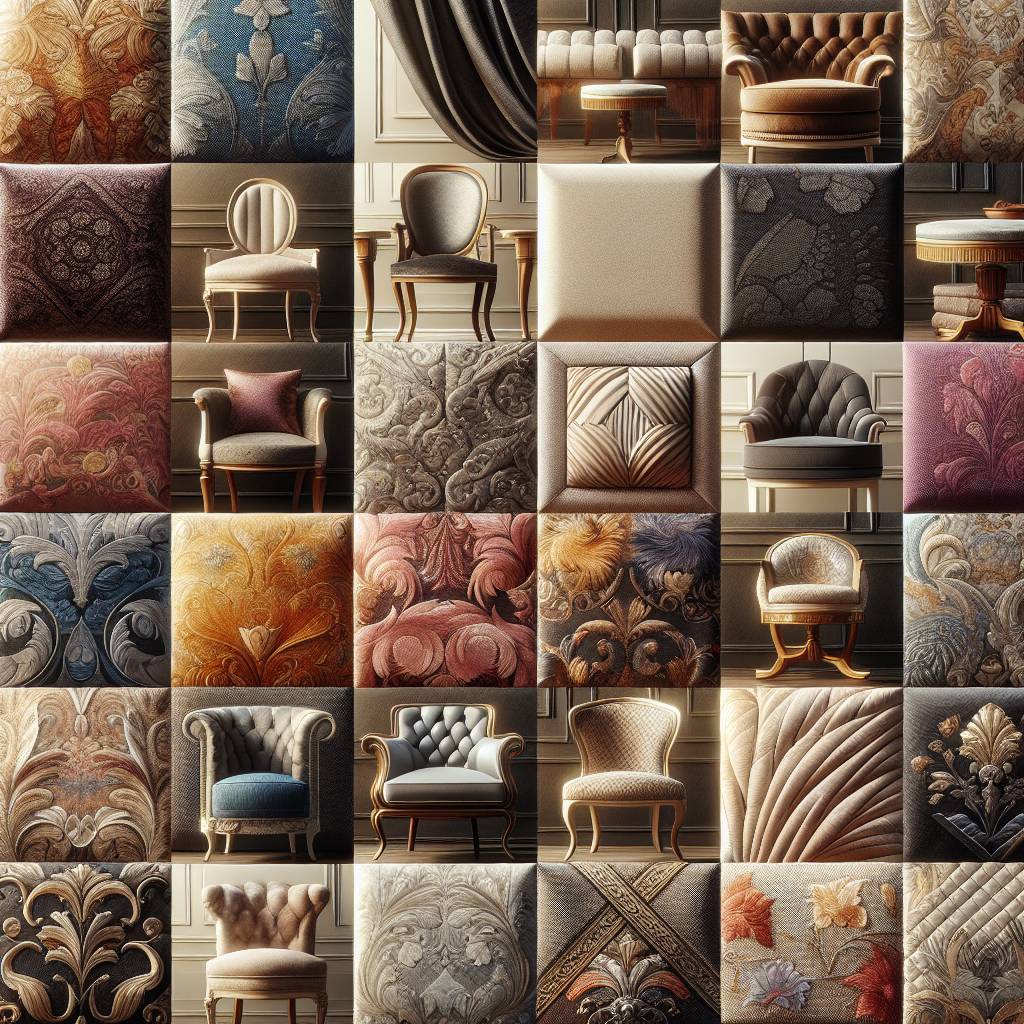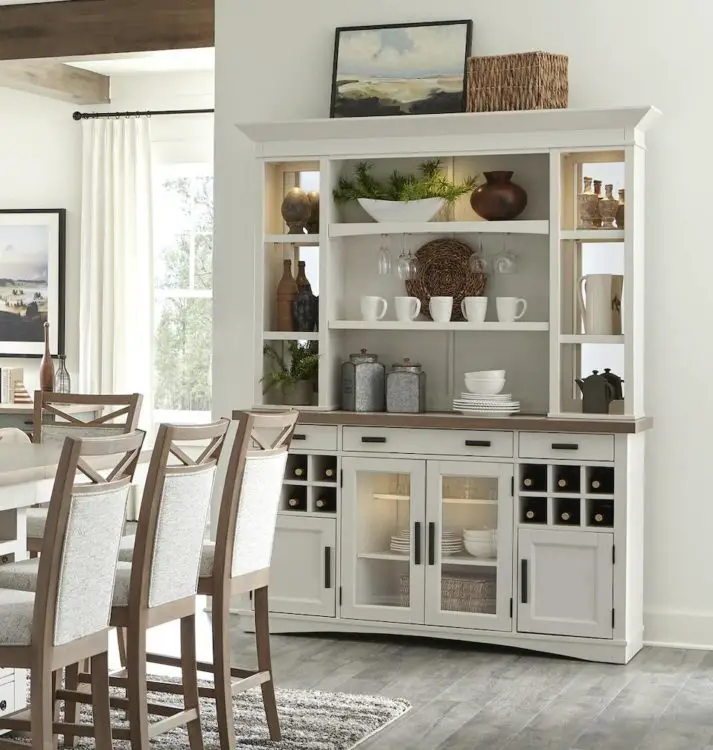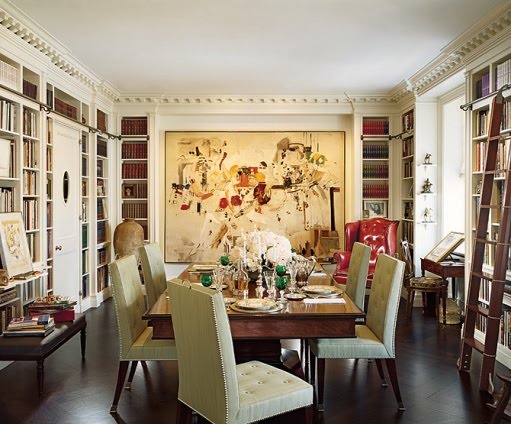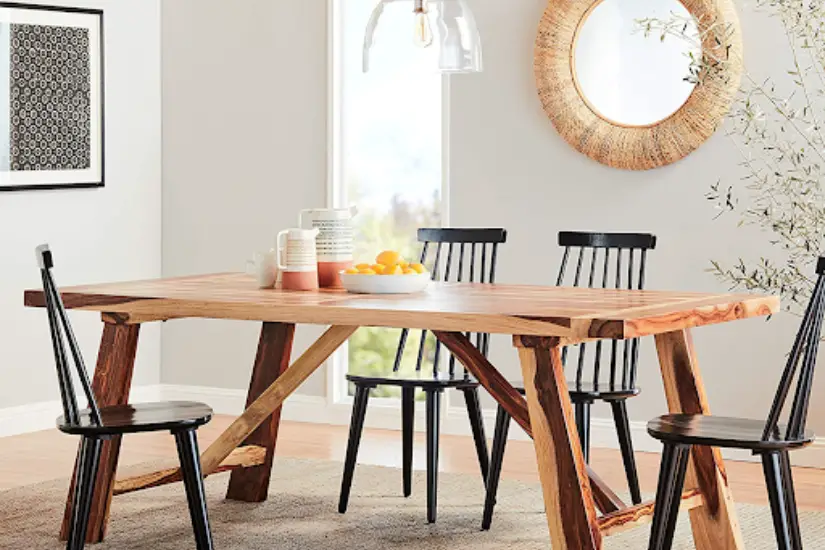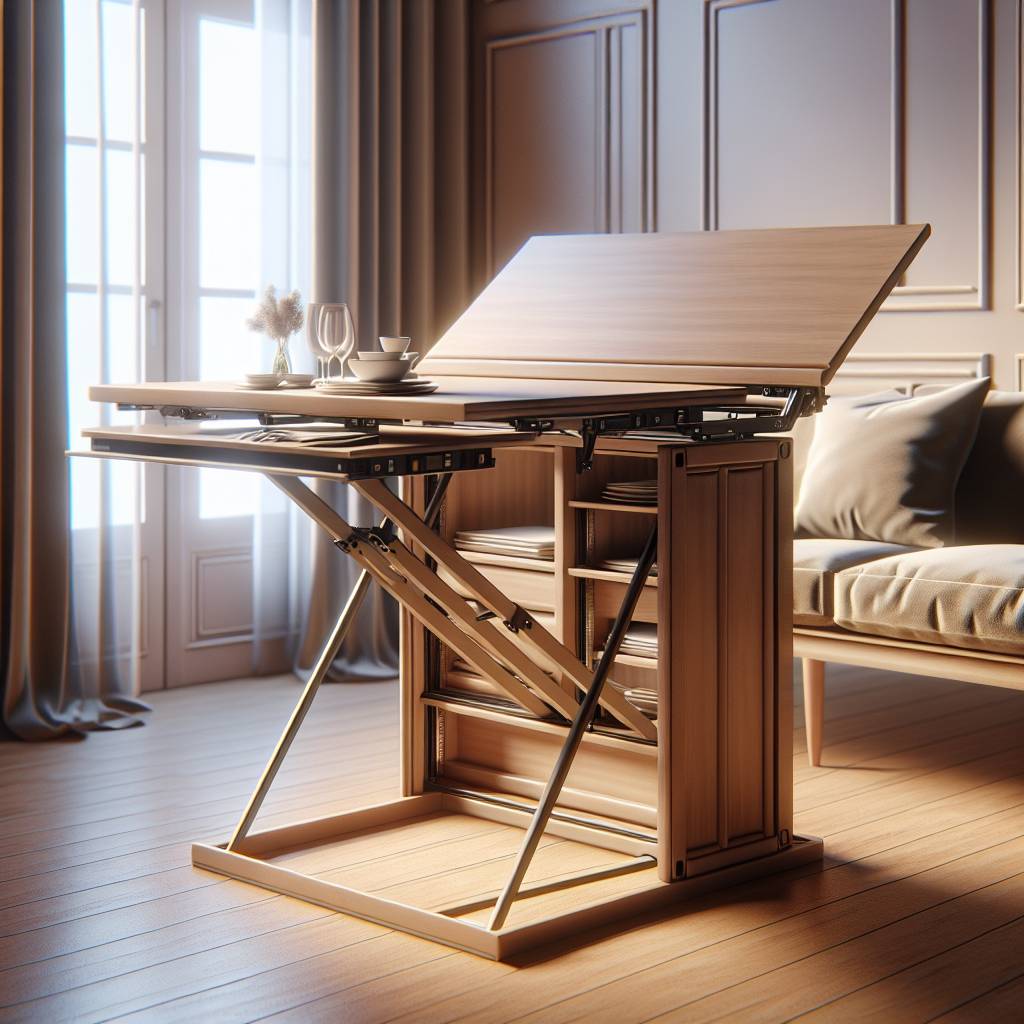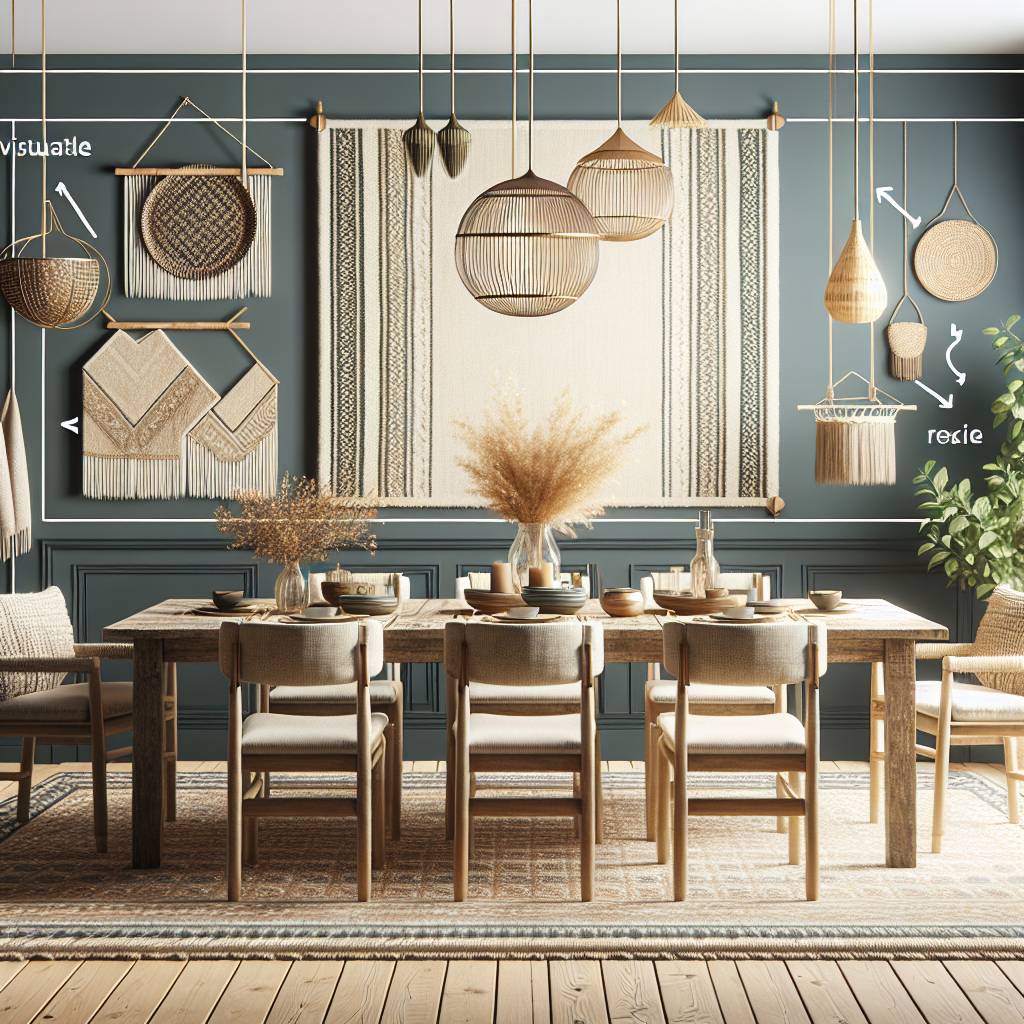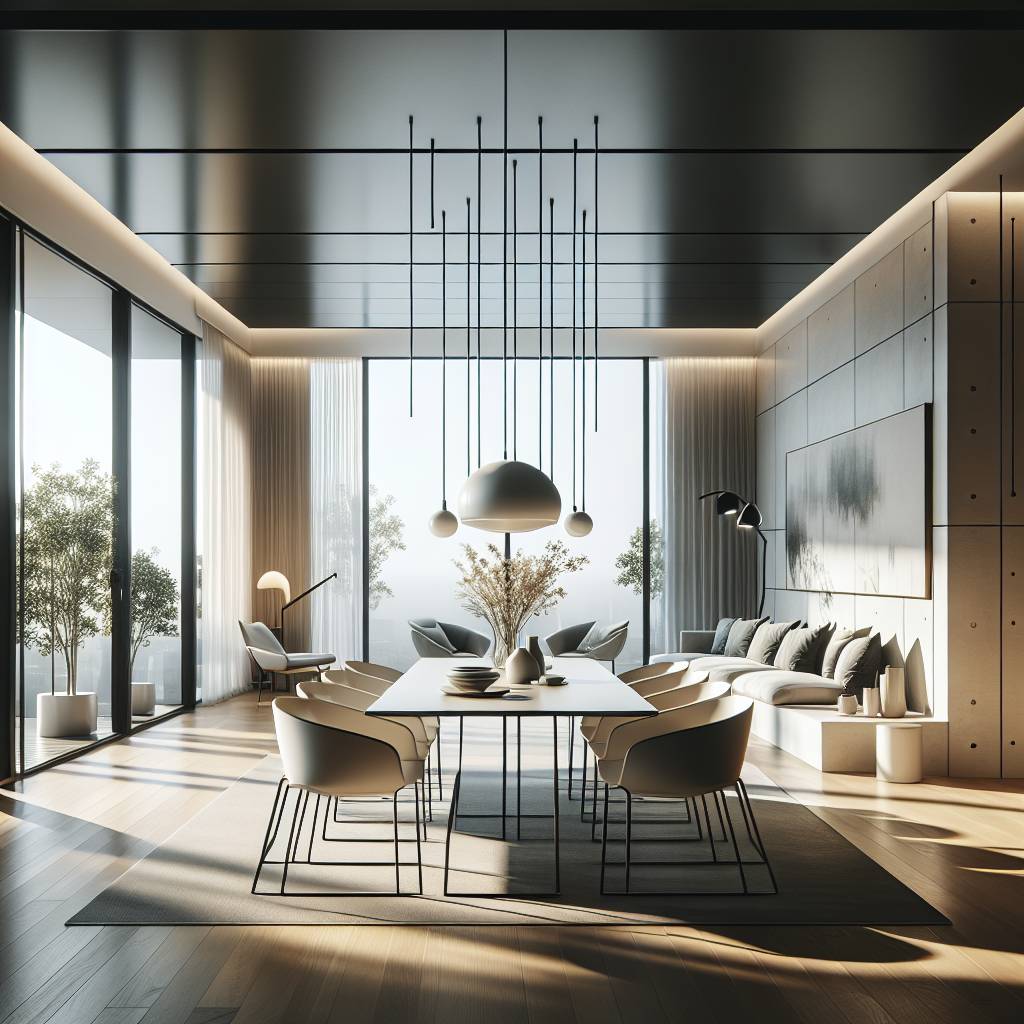In the realm of interior design, the fabric covering dining room chairs holds a significant place. The choice of high-end textiles not only adds elegance but also contributes to the overall ambiance of your dining space. From luxurious silks to durable and stylish leathers, the options are diverse and exciting. Understanding how the selection of cloth and colours can transform your dining area is crucial in curating a captivating setting that reflects both style and functionality.
Selecting high-end textiles for dining room chairs involves more than just aesthetics; it’s about creating an inviting environment where comfort meets sophistication. As we delve into this discussion, we’ll explore different textile options, their historical significance, practical tips for choosing the perfect fabric, and industry to elevate your dining experience.
Key Takeaways
- Choose durable upholstery fabrics like polyester blends or leather for long-lasting style and functionality.
- Opt for luxurious upholstery fabrics such as velvet or silk to add elegance and sophistication to your dining room chairs.
- Consider popular types of furniture upholstery fabric like cotton, linen, or microfiber for a balance of comfort and style.
- When selecting upholstery fabric for your dining room, prioritize factors such as durability, comfort, and ease of cleaning.
- Regularly clean and maintain upholstered dining chairs to preserve their beauty and extend their lifespan.
- Accurately measure your furniture to ensure you purchase the right amount of upholstery fabric for a seamless and professional-looking result.
Best Fabrics for Upholstering Dining Chairs
Velvet Upholstery
Velvet upholstery in various colours is a popular choice in the dining room chairs industry as it adds a touch of luxury and sophistication to the furniture. The soft, plush texture of velvet fabric creates an inviting and elegant ambiance in the dining area. Velvet comes in a wide range of colors, allowing homeowners to select the perfect shade that complements their dining room decor. Whether it’s deep jewel tones for a rich look or pastel hues for a more delicate touch, velvet offers versatility in design options.
Moreover, velvet upholstery can withstand regular use due to its durability. It resists abrasion well and maintains its luxurious appearance over time with proper care. This makes it an excellent choice for families or individuals who frequently entertain guests at their dining table.
Leather Upholstery
Leather upholstery is renowned for offering durability and a timeless appeal when used on dining chairs. The material exudes sophistication while providing practical benefits such as easy maintenance and cleaning. Spills wipe off leather easily without leaving stains or marks, making it ideal for households with children or pets.
Furthermore, leather develops character over time through natural wear and aging processes known as patina. As the leather ages gracefully, it enhances the charm of the dining chairs rather than diminishing their aesthetic appeal. In terms of style, leather upholstered dining chairs are versatile enough to suit both traditional and contemporary interior designs.
Linen Upholstery
Linen upholstery provides a lightweight and breathable option suitable for dining room chairs. This natural fabric offers comfort during warm weather by allowing air circulation around the body while seated at the dining table. Its casual yet refined appearance brings an effortless elegance to any space.
In addition to being environmentally friendly due to its biodegradability, linen also has hypoallergenic properties which make it suitable for individuals with allergies or sensitivities to synthetic materials often found in other fabrics.
Durable Upholstery Fabrics for Longevity and Style
Polyester Blends
Polyester blends are ideal for high-traffic dining areas due to their durability and resistance to stains. These fabrics can withstand regular use without showing signs of wear and tear. They are perfect for families with children, as spills and stains can be easily cleaned without leaving a mark.
Polyester blends offer a wide variety of fabric designs, ensuring that you can find the perfect cloth to complement your dining room decor. With these fabrics, you don’t have to worry about the heavy use impacting their appearance or quality over time.
Microfiber Upholstery
Microfiber upholstery is highly durable, making it an excellent choice for upholstering dining chairs. Its ability to resist fading ensures that your chairs will maintain their vibrant colors even after years of use. This makes it an ideal option for families with children or pets who may subject the dining chairs to frequent spills or accidents.
The stain-resistant properties of microfiber make it easy to clean, providing peace of mind against accidental spills during meal times or gatherings in the dining room. The long-lasting nature of microfiber upholstery ensures that your investment will serve you well for a long time without needing frequent replacement.
Crypton Fabric
Crypton fabric offers exceptional durability along with stain resistance and antimicrobial properties, making it an excellent choice for upholstering dining chairs. It is designed to withstand heavy use while maintaining its original beauty over time.
This fabric’s ability to repel stains ensures that any spills on your dining room chairs can be easily recovered without leaving lasting marks or damage. Its antimicrobial properties provide added protection against bacteria build-up from regular use in family settings.
Selecting Luxurious Upholstery Fabrics for Elegance
Silk Upholstery Fabric
Silk upholstery fabric is a top choice for creating an elegant and sophisticated ambiance in the dining room. The natural sheen and smooth texture of silk bring a touch of luxury to dining chairs, elevating the overall aesthetic. With a variety of designs and colors available, silk offers versatility to match different interior styles. Whether it’s classic brocade patterns or modern geometric designs, silk upholstery fabric can cater to diverse customer preferences.
Silk exudes elegance through its lustrous sheen and soft hand, making it an ideal option for those looking to add a luxurious touch to their dining room chairs. This high-end textile not only enhances the visual appeal but also provides a comfortable seating experience with its smooth feel. Customers seeking sophistication and refinement in their dining space will find that silk upholstery fabric perfectly complements their vision.
Satin Upholstery Fabric
Satin upholstery fabric is another excellent choice for achieving an elegant look in the dining room. Its glossy surface creates a visually stunning effect, adding depth and richness to chair seats while emanating opulence. Available in various colors, satin allows customers to personalize their dining chairs according to their preferred color schemes or design themes.
The lustrous sheen of satin brings out the best in any light setting, whether it’s natural daylight streaming through windows or ambient lighting during evening gatherings. This makes satin upholstery fabric versatile enough to adapt seamlessly to different lighting conditions without compromising its elegant appearance.
Chenille Upholstery Fabric
For those desiring both style and comfort in their dining room chairs, chenille upholstery fabric presents itself as an exquisite option. Renowned for its softness and plush feel, chenille adds a layer of luxury that transforms ordinary chair seats into cozy yet elegant furniture pieces. Its tactile appeal contributes significantly to creating an inviting atmosphere at the dinner table.
Chenille comes in various rich colors that can effortlessly enhance the overall look of the dining area while offering practicality by concealing stains effectively—a valuable feature especially when considering everyday use or family-friendly environments.
Popular Types of Furniture Upholstery Fabric
Cotton Upholstery Fabric
Cotton upholstery fabric is a popular choice for dining chair upholstery due to its versatility, breathability, and availability in various patterns and colors. This type of fabric offers a comfortable seating experience while also adding aesthetic appeal to the dining room. For example, cotton can be found in solid colors or vibrant prints, allowing homeowners to choose the perfect fabric that complements their dining room decor. Its breathability ensures that it remains cool during warmer months, providing comfort during long dinners or gatherings.
Cotton upholstery fabric’s versatility makes it an ideal choice for those seeking both functionality and style. Whether one prefers a modern look with geometric patterns or a more classic appearance with floral designs, cotton provides numerous options for expressing individual tastes through dining chair upholstery. Furthermore, this type of fabric is relatively easy to clean and maintain, making it suitable for everyday use in the dining room.
Jacquard Upholstery Fabric
Jacquard upholstery fabric stands out due to its intricate patterns woven into the material. When used for dining chairs’ upholstery, jacquard adds visual interest and sophistication to the furniture pieces. The elaborate designs create an elegant ambiance within the dining room space while elevating the overall interior decor. For instance, homeowners can opt for jacquard fabrics featuring ornate motifs such as damask or brocade patterns to infuse luxury into their dining area.
The unique weaving technique employed in jacquard fabrics results in raised patterns that catch light beautifully—enhancing the texture and depth of upholstered chairs. Moreover, these luxurious textures contribute to creating a refined atmosphere suitable for formal dinner parties or special occasions hosted at home.
Faux Leather Upholstery Fabric
Faux leather upholstery fabric offers an attractive alternative to real leather at a more affordable price point while being easier to maintain—an appealing feature when considering high-end textiles for dining room chairs’ upholstery. This type of fabric mimics genuine leather’s appearance without sacrificing quality; thus providing elegance without excessive cost.
Choosing the Best Upholstery Fabric for Your Dining Room
Durability Considerations
When choosing high-end textiles for dining room chairs, it’s crucial to consider the level of durability required based on your lifestyle and usage of the dining room. If you have a bustling household with children or pets, you’ll want a fabric that can withstand frequent use and potential spills. For example, fabrics like Sunbrella or leather are highly durable and easy to clean, making them ideal choices for high-traffic dining areas. On the other hand, if your dining area is used less frequently, you might opt for more delicate yet luxurious options such as silk blends or linen.
It’s important to remember that while some fabrics may be more durable than others, they might not always align with your desired aesthetic appeal. Therefore, striking a balance between functionality and style is key when selecting upholstery fabric for your dining chairs.
Aesthetic Appeal and Style
The desired aesthetic appeal plays a significant role in choosing upholstery fabric for dining room seating. The fabric should complement the overall decor of your dining room seamlessly. For instance, if you have a modern-themed dining space with sleek lines and minimalistic furniture, opting for fabrics like faux suede or microfiber can enhance the contemporary look while providing comfort during meals.
Conversely, if your dining area features traditional wooden furniture with intricate detailing, rich velvet or chenille fabrics could add an elegant touch to the space without compromising on comfort. By considering these factors alongside personal preferences in color schemes and patterns, you can ensure that the chosen upholstery fabric harmonizes with the existing design elements in your dining room.
Maintenance Factors
In addition to aesthetics and durability considerations when selecting upholstery fabric, evaluating maintenance factors such as stain resistance and colorfastness is essential. Fabrics treated with stain-resistant finishes like Crypton or those made from solution-dyed acrylic fibers offer added protection against spills and stains – perfect for maintaining pristine-looking chairs in a busy household.
Furthermore, ensuring colorfastness – which refers to how well the fabric retains its color over time – is vital when exposed to natural light from windows or adjacent open spaces within proximity of your dining area.
Evaluating Furnishing Concepts for Dining Chair Elegance
Upholstery Fabric Textures
There are various upholstery fabric textures that can elevate the elegance of your dining space. For instance, you might consider incorporating luxurious velvet fabric to add a touch of opulence to your chairs. The soft and plush texture of velvet not only creates a sophisticated ambiance but also offers a comfortable seating experience.
On the other hand, silk fabric exudes an air of refinement and luxury, making it an excellent choice for those seeking an upscale aesthetic. Its smooth and lustrous surface adds a sense of grandeur to the dining room environment, elevating the overall visual appeal. chenille fabric with its velvety feel can bring warmth and richness to your dining chairs, enhancing their elegance while ensuring comfort during meals.
Patterns or Prints in Upholstery Fabric
Incorporating patterns or prints into the upholstery fabric is another way to create a statement piece in your dining room. Whether you opt for subtle designs like delicate florals or bold motifs such as geometric shapes, these patterns can infuse personality into your chairs while serving as focal points in the space. Combining solid-colored fabrics with intricate patterns can also offer a harmonious blend that adds visual interest without overwhelming the overall design scheme.
Experimenting with different textures alongside varying patterns opens up opportunities to curate unique chair designs that reflect individual style preferences. By carefully selecting complementary or contrasting elements within the upholstery fabric, you can achieve an elegant look that resonates with your personal taste while enhancing the sophistication of your dining area.
Contrasting or Complementary Colors
When considering high-end textiles for dining room chairs, exploring contrasting or complementary colors is crucial in achieving an aesthetically pleasing outcome. For example, pairing rich jewel-toned fabrics like deep emerald green or sapphire blue with metallic accents can create a luxurious ambiance within the dining space. These striking color combinations contribute to an upscale feel while adding depth and dimension to the overall decor.
Alternatively, opting for complementary colors such as soft blush pink paired with muted gold tones imparts a sense of understated elegance and sophistication without being overpowering. This approach allows for creating visually appealing contrasts that draw attention without overshadowing other design elements present in the room.
Pros and Cons of Different Upholstery Materials
Leather
Leather is known for its durability and luxurious appearance, making it a popular choice for high-end textiles for dining room chairs. However, it requires regular maintenance to prevent cracking. Despite the need for upkeep, leather provides an elegant and sophisticated look that can elevate the overall aesthetic of the dining area. It’s important to note that genuine leather may be pricier compared to other upholstery materials but offers exceptional longevity when properly cared for.
When considering using leather as an upholstery material for dining room chairs, it’s essential to weigh the benefits of its durability against the required maintenance. While some individuals appreciate the classic appeal of aged leather with natural patina, others may prefer a more pristine look, necessitating consistent care and conditioning.
Synthetic Fabrics
Synthetic fabrics such as polyester blends and microfiber are highly durable options suitable for dining chair upholstery. These materials are also easy to clean, making them ideal choices for families or those who frequently entertain guests. Despite their practicality, synthetic fabrics may lack the natural feel associated with other materials like cotton or linen.
Choosing synthetic fabrics offers a balance between functionality and aesthetics in dining room chair upholstery. Families with young children or those desiring low-maintenance furniture might find these materials particularly appealing due to their stain-resistant properties and ease of cleaning.
Natural Fabrics
Natural fabrics like cotton and linen provide breathability along with a soft touch that adds comfort to dining room chairs. However, they may be more prone to staining compared to synthetic alternatives. The tactile sensation offered by natural fabrics contributes warmth and coziness to the dining space while allowing air circulation – an important factor in maintaining comfort during extended periods at the table.
When opting for natural fabric upholstered chairs in a dining setting, it’s crucial to consider factors such as spill resistance treatments or protective coatings that can help mitigate potential staining issues without compromising on their desirable characteristics.
Cleaning Tips for Upholstered Dining Chairs
Regular Vacuuming
To maintain high-end textiles for dining room chairs, it’s crucial to regularly vacuum the upholstered surface. Dust and debris can accumulate over time, making the fabric look dull and unkempt. By using a handheld vacuum or an upholstery attachment, you can easily remove these particles from the fabric. This simple practice not only keeps your dining chairs looking clean but also prevents dirt from embedding deep into the fibers.
Vacuuming is especially important if your dining area gets a lot of foot traffic or if you have pets that like to perch on the chairs. These activities tend to introduce more dust and hair onto the upholstery, making regular vacuuming essential in preserving the pristine condition of your high-quality fabrics.
Spot Cleaning Spills or Stains
Inevitably, spills and stains will occur on upholstered dining chairs. When this happens, it’s important to address them promptly using appropriate methods recommended by the manufacturer. One common method involves using a damp cloth with mild soap to gently dab at the affected area without rubbing vigorously.
Always refer to the manufacturer’s instructions for specific cleaning guidelines tailored to your chair’s fabric type. For instance, some high-end textiles may require specialized cleaning solutions or techniques to effectively remove stains without damaging the material.
It’s also worth noting that different upholstery materials may react differently to certain cleaning agents, so always perform a patch test in an inconspicuous area before applying any cleaning solution liberally across the entire chair.
Professional Upholstery Cleaning
While regular maintenance such as vacuuming and spot cleaning is effective for day-to-day care of upholstered dining chairs, professional upholstery cleaning services offer deeper cleansing and maintenance benefits. These services are particularly beneficial for high-end textiles as they involve specialized equipment and expertise in handling delicate fabrics while ensuring thorough cleanliness.
Professional cleaners have access to advanced tools and techniques designed specifically for deep-cleaning various types of upholstery materials without causing damage. Their expertise allows them to identify specific needs based on factors such as fabric composition, colorfastness, and potential shrinkage issues—ensuring that your high-quality textiles receive optimal care without compromising their integrity.
Measuring Furniture for Upholstery Fabric Accurately
Determining Fabric Quantity
Measuring the length, width, and height of dining chair seats is crucial in accurately determining the amount of fabric needed for upholstery. For instance, if a chair seat measures 18 inches by 20 inches and has a height of 3 inches, you would need to calculate the total surface area to cover. It’s essential to account for any additional fabric required for pattern matching or creating welting details.
When measuring the dimensions of your dining room chairs, remember that accuracy is key. Take into consideration any curves or unusual shapes on the furniture that may affect how much fabric is needed. Once you have these measurements, calculate the total yardage necessary based on your chosen upholstery fabric’s width.
Double-Checking Measurements
Before purchasing upholstery fabric, it’s imperative to double-check all measurements to ensure accuracy. Any discrepancies could lead to insufficient fabric or unnecessary wastage. Taking precise measurements can also help avoid costly mistakes and minimize material wastage during the upholstering process.
One way to ensure accurate measurements is by measuring each chair seat multiple times using different methods (e.g., across different points) and averaging out those results. This approach helps mitigate potential errors caused by irregularities in chair shape or measurement technique.
Summary
Congratulations on making it through the whirlwind of information about high-end textiles for dining room chairs! You’ve learned about the best fabrics for upholstering dining chairs, including durable options for longevity and style, as well as luxurious choices for adding elegance to your space. We discussed popular types of furniture upholstery fabric and walked through the process of choosing the best upholstery fabric for your dining room. You also gained insights into evaluating furnishing concepts for dining chair elegance, understanding the pros and cons of different upholstery materials, and mastering cleaning tips for upholstered dining chairs. Don’t forget to measure your furniture accurately before diving into your upholstery project!
Now armed with this knowledge, you’re ready to transform your dining room chairs into stunning pieces that not only look fabulous but also stand the test of time. So, go ahead, unleash your creativity, and let these newfound insights guide you toward creating a dining space that’s both stylish and functional.
Frequently Asked Questions
What are the best fabrics for upholstering dining chairs?
When choosing upholstery fabric for dining chairs, consider durable and stain-resistant options like leather, velvet, or microfiber. These materials offer both elegance and practicality, making them ideal for frequent use in a dining setting.
How do I accurately measure furniture for upholstery fabric?
To ensure accurate measurements for your dining chair upholstery project, start by measuring the length and width of the seat cushion. Then measure the backrest height and width. Add extra inches to account for seam allowances and tucking in.
What are the pros and cons of different upholstery materials?
Leather offers durability but may be prone to scratches, while velvet provides luxury but requires regular maintenance. Microfiber is easy to clean but may not have as luxurious a look as other fabrics. Consider your lifestyle when weighing these factors.
How can I select luxurious upholstery fabrics that add elegance to my dining room?
For an elegant touch in your dining room, opt for rich textures like velvet or silk blends in deep colors such as navy or emerald green. These fabrics exude opulence while also offering comfort during long dinner gatherings.
What cleaning tips should I follow for upholstered dining chairs?
Regularly vacuum upholstered dining chairs to remove dust and crumbs. For spills or stains, blot gently with a clean cloth before using a mild detergent solution on the affected area. Always check manufacturer guidelines before cleaning any specific fabric type.
